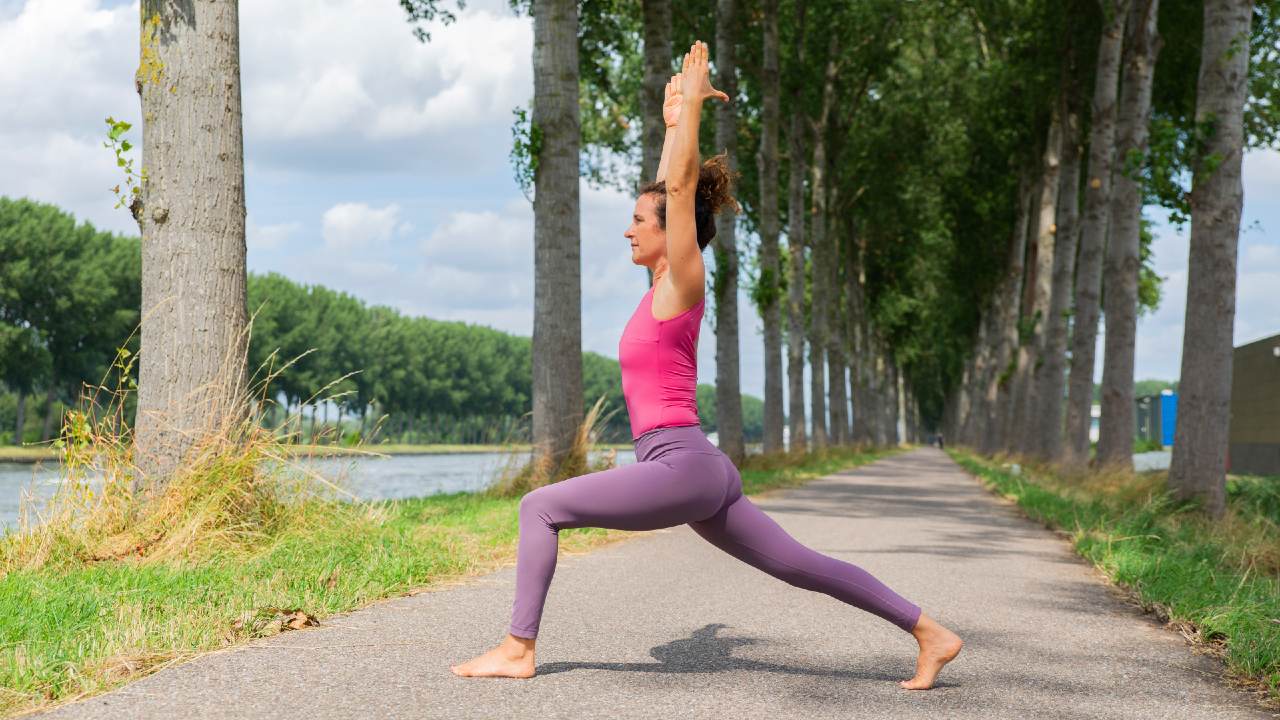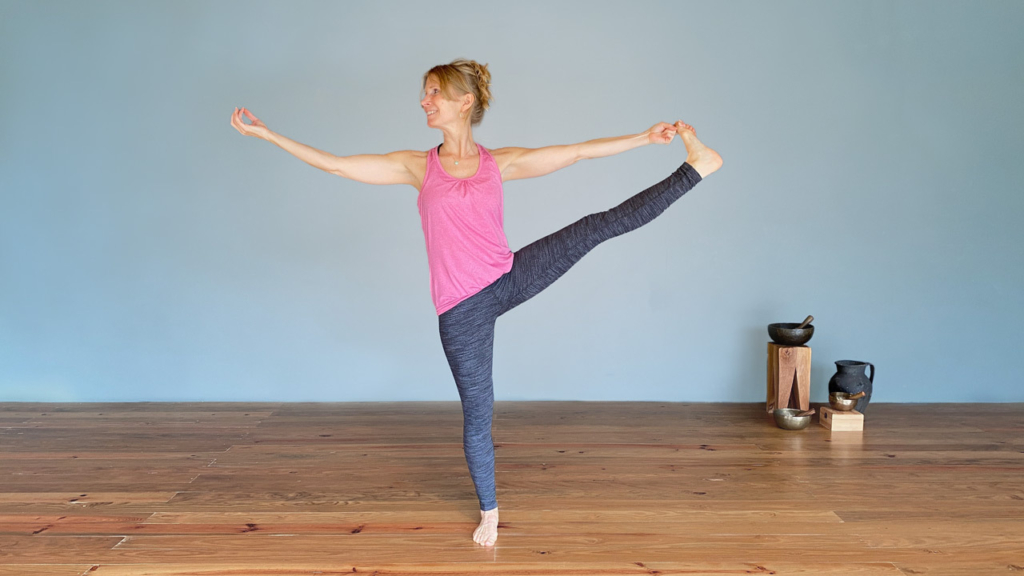What does the first hour of your day look like? A slow and gentle yoga session? A morning run? Rushing around making breakfasts and organising the kids?
How we spend the morning can have a profound effect on how we feel for the whole day. It can put us in a frazzled and frantic state of mind, or an empowered and calm one. So it pays off to create your own optimal morning ritual: your ‘power hour’ plan!
Whilst you may not have a whole hour to yourself (let’s be realistic – it could be more like 10 minutes), the overall principle of adopting a ‘power hour’ morning comes down to including three things in your routine:
- something that gives you energy
- something that settles your mind
- and something that sets the tone for how you want to feel for the rest of the day.
Before we dive into your power hour morning plan, we’ll explore the slightly geeky side of circadian rhythms and ATP production, as well as a more traditional Ayurvedic approach. Ready to power-up your mornings? Read on!
Dinacharya
Yoga’s sister science of Ayurveda has a rich and ancient history and a lot of useful advice we can use in modern life. One of the key aspects of an Ayurvedic lifestyle is rhythm. Ayurveda suggests cultivating a daily routine, known as a dinacharya. A dinacharya aligns with the energetic shifts throughout the day. It leans into the lightness of Vata in the early mornings, the steadiness of Kapha throughout the later morning hours, and the focus and fire of Pitta in the middle of the day.
These changes of energy throughout the day support different actions (see more in this article about doing yoga at different times of day); there’s an optimal time to wake, eat, work, play and sleep, and it’s all based upon circadian rhythms.
Circadian Rhythms
A scienc-y sounding word, circadian rhythms refers to the daily light-dark cycle, and the body clock. Throughout the entirety of human evolution, we’ve lived in alignment with the sun. We’d awaken around sunrise, and sleep not long after sunset (after a while spent sitting around the fire perhaps).
The more we reconnect to our natural rhythms and the arc of the sun, the more we support our health and wellbeing. Balancing our circadian rhythms requires that we wake up early, expose our eyes (and an appropriate amount of skin) to morning sunlight, and sleep when it’s dark.
If you want to change just one thing about your mornings, try getting outside ASAP. When we see natural sunlight, this stimulates the suprachiasmatic nucleus (or SCN) to send messages throughout the body that it’s time to wake up. Seeing this morning light allows melatonin (the ‘sleep hormone’) to filter out of the body, and essentially kick-starts digestion, brain power, and energy for the day.
If we miss out on this morning light, melatonin stays circulating around the body for longer, meaning we may feel groggy and tired, and digestion may be more sluggish.
ATP & Mitochondria
It’s useful to know a little about how the body makes energy, and the key ways to feel more energised.
Inside our cells, there are tiny ‘engines’ called Mitochondria. Mitochondria are ‘powerhouse’ structures in each cell that produce energy. The energy these structures produce is called ATP, and muscle cells use ATP to contract. All movement, digestion, breathing and even our heartbeat requires energy and muscle contractions, so having healthy mitochondria and well-functioning ATP is important!
Boosting ATP production is all about supporting mitochondrial function, and you can do this with breathwork, movement, consuming a diet that doesn’t spike your blood sugar, getting enough sunlight, using hormetic stressors (good ‘stress’ that makes us more resilient, like cold showers, intermittent fasting and saunas), and taking certain supplements.
A diet that supports mitochondrial health includes foods:
- with sufficient amounts of healthy protein and fat like avocado and coconut oil
- high in vitamin C like berries and black currants, citrus fruits, guava, kiwi and broccoli
- high in zinc like cashews and pumpkin seeds, and
- with lots of B vitamins like nutritional yeast, bananas, sesame seeds and squash.
So now you know the importance of a morning routine, and a few ways to feel powered-up, how do you start to create your hour of power? First of all, start by focusing on what you’re not going to do.
Your morning Power Hour plan: What not to do
Don’t check your emails or social media as soon as you wake up. Think of opening each social media app like walking into a room full of people; would you walk into that room before you’d brushed your teeth, showered, or completed your morning routine? If not, set an intention to leave your phone off, on airplane mode. Or simply stay away from those apps until after your power hour. If you use your phone as an alarm clock, you could try switching to an analogue clock so you’re not tempted to check first thing.
Your power hour morning is about empowering you, not about giving your power away to others.
The second thing not to do is hit snooze. Not only does this compromise our ability to feel energised and up-beat, it also disturbs our sleep-wake cycle, making us feel more groggy and tired throughout the day.
To prevent yourself from pressing the snooze button, keep your alarm clock or phone across the other side of the room, so you’ll have to physically get up to switch it off. You could also choose an alarm clock that comes with a light that slowly becomes brighter, mimicking sunrise and waking you more naturally.
Finally, if you’re someone who sets multiple alarms (one at the time you’d ‘ideally’ wake up, one at a more realistic time, and a final ‘just in case’ alarm. Yes, I’ve done this too…) then firmly decide to set just one alarm, giving yourself enough sleep, and a specific time to wake up. If you can wake up at the same time each morning too, this will further support a healthy sleep-wake cycle.
Your morning Power Hour plan: What to do
Remember that whether you have an hour or a few minutes, your morning is about empowering you, so adapt it to suit what truly powers you up. The following plan can be tweaked to suit your lifestyle, and the amount of time you have. Use a guided meditation if it helps you commit to the practice.
- Wake up at sunrise or just before, and take three slow, deep breaths. Check in with how you’re feeling in your mind and body.
- After a trip to the bathroom (where you could practice Ayurvedic tongue-scraping and oil pulling) it’s time to step outside. When you’re outside, power-up your energy levels with a breathwork practice like Kappalabhati pranayama or try the Wim Hof Method.
- To wake up your digestive system, sip warm water with lemon. Choose lime juice instead if you feel like you’re holding a lot of internal heat.
- Spend a few minutes journaling, either with a gratitude list, stream of consciousness, or with prompts. Use these questions to journal with if they resonate with you: ‘What feeling do I intend to bring into today?’, ‘How do I feel right now?’, ‘What can I do today to support my mental health?’, ‘What can I do today to support my physical health?’, ‘Who can I help today?’, ‘What can I do to make the world a better place today?’.
- Next, it’s time to move! Choose a yoga class – or if running, swimming or walking is more your thing, go for it.
Save precious time in the mornings with a online yoga program
Cut down on decisions in the mornings by following a guided meditation program where the classes are chosen for you.
Join us for 21 Mornings with Yoga!
- After movement, find stillness with a meditation practice. There are lots of meditations to choose from, and if you haven’t practiced before, remember that even a few minutes can make a huge difference.
- The next step is about really feeding your motivation. Engage in something you’re passionate about, but rarely make time for. Do you have a creative project you’re working on; a course you’re following; an instrument you love, or a book you feel inspired by? These are things we tend to dismiss and squeeze in ‘if we have time’. The things that make you feel inspired, that fill you with joy and put you in the flow state are the things that make life a rich and fulfilling experience! Don’t wait until later to fit in the thing you love to do. Connect to it in your morning power hour, even if it’s just for a couple of minutes.
- Finally, I’d recommend cold showers as a way to take your morning to the next level! Personally, cold showers provide me with a huge energy boost, and put me in a positive place for the day. If you’re just starting out, switch between warm and cold a few times. Doing this can really enhance circulation. Listen to your body too. It’s all about what feels right to you.
So there you have it, your morning power hour! Remember that your morning is for you, so switch and swap what resonates with you, and if you have a very short amount of time. The good news is that even picking one thing off the list will help set you up for a great day ahead.


